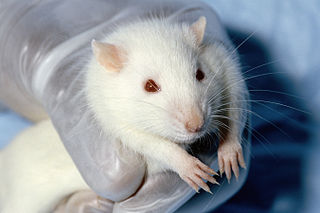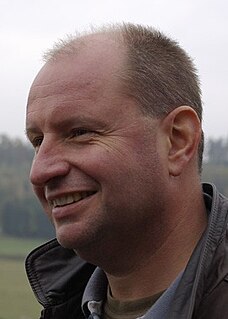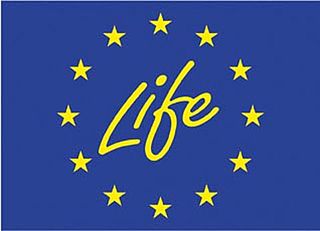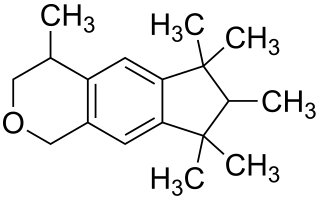Related Research Articles
A biocide is defined in the European legislation as a chemical substance or microorganism intended to destroy, deter, render harmless, or exert a controlling effect on any harmful organism. The US Environmental Protection Agency (EPA) uses a slightly different definition for biocides as "a diverse group of poisonous substances including preservatives, insecticides, disinfectants, and pesticides used for the control of organisms that are harmful to human or animal health or that cause damage to natural or manufactured products". When compared, the two definitions roughly imply the same, although the US EPA definition includes plant protection products and some veterinary medicines.

Registration, Evaluation, Authorisation and Restriction of Chemicals (REACH) is a European Union regulation dating from 18 December 2006. REACH addresses the production and use of chemical substances, and their potential impacts on both human health and the environment. Its 849 pages took seven years to pass, and it has been described as the most complex legislation in the Union's history and the most important in 20 years. It is the strictest law to date regulating chemical substances and will affect industries throughout the world. REACH entered into force on 1 June 2007, with a phased implementation over the next decade. The regulation also established the European Chemicals Agency, which manages the technical, scientific and administrative aspects of REACH.

Waste hierarchy is a tool used in the evaluation of processes that protect the environment alongside resource and energy consumption from most favourable to least favourable actions. The hierarchy establishes preferred program priorities based on sustainability. To be sustainable, waste management cannot be solved only with technical end-of-pipe solutions and an integrated approach is necessary.

The Framework Programmes for Research and Technological Development, also called Framework Programmes or abbreviated FP1 to FP9, are funding programmes created by the European Union/European Commission to support and foster research in the European Research Area (ERA). Starting in 2014, the funding programmes were named Horizon.

Environmental dumping is the practice of transfrontier shipment of waste from one country to another. The goal is to take the waste to a country that has less strict environmental laws, or environmental laws that are not strictly enforced. The economic benefit of this practice is cheap disposal or recycling of waste without the economic regulations of the original country.

Alternatives to animal testing are the development and implementation of test methods that avoid the use of live animals.
A substance of very high concern (SVHC) is a chemical substance concerning which it has been proposed that use within the European Union be subject to authorisation under the REACH Regulation. Indeed, listing of a substance as an SVHC by the European Chemicals Agency (ECHA) is the first step in the procedure for authorisation or restriction of use of a chemical. The first list of SVHCs was published on 28 October 2008 and the list has been updated many times to include new candidates. The most recent update occurred in January 2022 to include a total of 223 SVHC.

Thomas Jakl is the former chair of the European Chemicals Agency's Management board and is Deputy Director General of the Austrian Environment Ministry responsible for Chemicals Policy. His field of activity includes legislation on chemical substances at the national, European and UN levels. He served as ECHA's president from 2008 until September 2012. He is president of the Governing Board and "Ambassador" of the EU's Human Biomonitoring program "HBM4EU".

Directive 2009/28/EC is a European Union directive which mandates levels of renewable energy use within the European Union from 2009 to 2021. The directive was published on 23 April 2009 and amends and repealed Directive 2001/77/EC. The directive required that 20 percent of the energy consumed within the European Union is renewable. This target is pooled among the member states. Directive (EU) 2018/2001 repeals Directive 2009/28/EC on 1 July 2021.

The LIFE programme is the European Union’s funding instrument for the environment and climate action. The general objective of LIFE is to contribute to the implementation, updating and development of EU environmental and climate policy and legislation by co-financing projects with European added value. LIFE began in 1992 and to date there have been five phases of the programme. During this period, LIFE has co-financed some 4600 projects across the EU, with a total contribution of approximately 6.5 billion Euros to the protection of the environment and of climate. For the next phase of the programme (2021-2027) the European Commission proposed to raise the budget to 5.45 billion Euro.
Environmental issue in the European Union include the environmental issues identified by the European Union as well as its constituent states. The European Union has several federal bodies which create policy and practice across the constituent states.
System of Environmental-Economic Accounting (SEEA) is a framework to compile statistics linking environmental statistics to economic statistics. SEEA is described as a satellite system to the United Nations System of National Accounts (SNA). This means that the definitions, guidelines and practical approaches of the SNA are applied to the SEEA. This system enables environmental statistics to be compared to economic statistics as the system boundaries are the same after some processing of the input statistics. By analysing statistics on the economy and the environment at the same time it is possible to show different patterns of sustainability for production and consumption. It can also show the economic consequences of maintaining a certain environmental standard.

A circular economy is "a model of production and consumption, which involves sharing, leasing, reusing, repairing, refurbishing and recycling existing materials and products as long as possible". A CE aims to tackle global challenges like climate change, biodiversity loss, waste, and pollution by emphasizing design based implementation of the three base principles of the model. The three principles required for the transformation to a circular economy are: eliminating waste and pollution, circulating products and materials, and the regeneration of nature. CE is defined in contradistinction to the traditional linear economy.
Sustainable products are those products that provide environmental, social and economic benefits while protecting public health and environment over their whole life cycle, from the extraction of raw materials until the final disposal.

The term environmental persistent pharmaceutical pollutants (EPPP) was first suggested in the nomination in 2010 of pharmaceuticals and environment as an emerging issue in a Strategic Approach to International Chemicals Management (SAICM) by the International Society of Doctors for the Environment (ISDE). The occurring problems from EPPPs are in parallel explained under environmental impact of pharmaceuticals and personal care products (PPCP). The European Union summarizes pharmaceutical residues with the potential of contamination of water and soil together with other micropollutants under "priority substances".
The SIN List is a database developed by the International Chemical Secretariat (ChemSec) of chemicals the uses of which are likely to become legally restricted under EU REACH regulation. The list is being used by public interest groups as a campaign tool to advocate for increasing the pace of implementation of REACH and by commercial interests to identify substances for control in chemicals management programmes.

Galaxolide is a synthetic musk with a clean sweet musky floral woody odor used in fragrances. It is one of the musk components that perfume and cologne manufacturers use to add a musk odor to their products. Galaxolide was first synthesized in 1965, and used in the late 1960s in some fabric softeners and detergents. High concentrations were also incorporated in fine fragrances.
The European Union (EU) Environmental Policy was initiated in 1973 with the "Environmental Action Programme" at which point the Environmental Unit was formed. The policy has thereafter evolved to "to cover a vast landscape of different topics enacted over many decades" (Reuters) and in 2015 the Institute for European Environmental Policy estimated that "the body of EU environmental law" amounted to 500+ directives, regulations and decisions.
"Over the past decades the European Union has put in place a broad range of environmental legislation. As a result, air, water and soil pollution has significantly been reduced. Chemicals legislation has been modernised and the use of many toxic or hazardous substances has been restricted. Today, EU citizens enjoy some of the best water quality in the world"

A pesticide, also called Plant Protection Product (PPP), which is a term used in regulatory documents, consists of several different components. The active ingredient in a pesticide is called “active substance” and these active substances either consist of chemicals or micro-organisms. The aims of these active substances are to specifically take action against organisms that are harmful to plants. In other words, active substances are the active components against pests and plant diseases.
The European Green Deal, approved 2020, is a set of policy initiatives by the European Commission with the overarching aim of making the European Union (EU) climate neutral in 2050. An impact assessed plan will also be presented to increase the EU's greenhouse gas emission reductions target for 2030 to at least 50% and towards 55% compared with 1990 levels. The plan is to review each existing law on its climate merits, and also introduce new legislation on the circular economy, building renovation, biodiversity, farming and innovation.